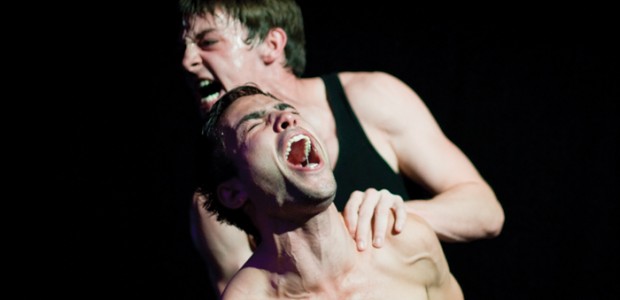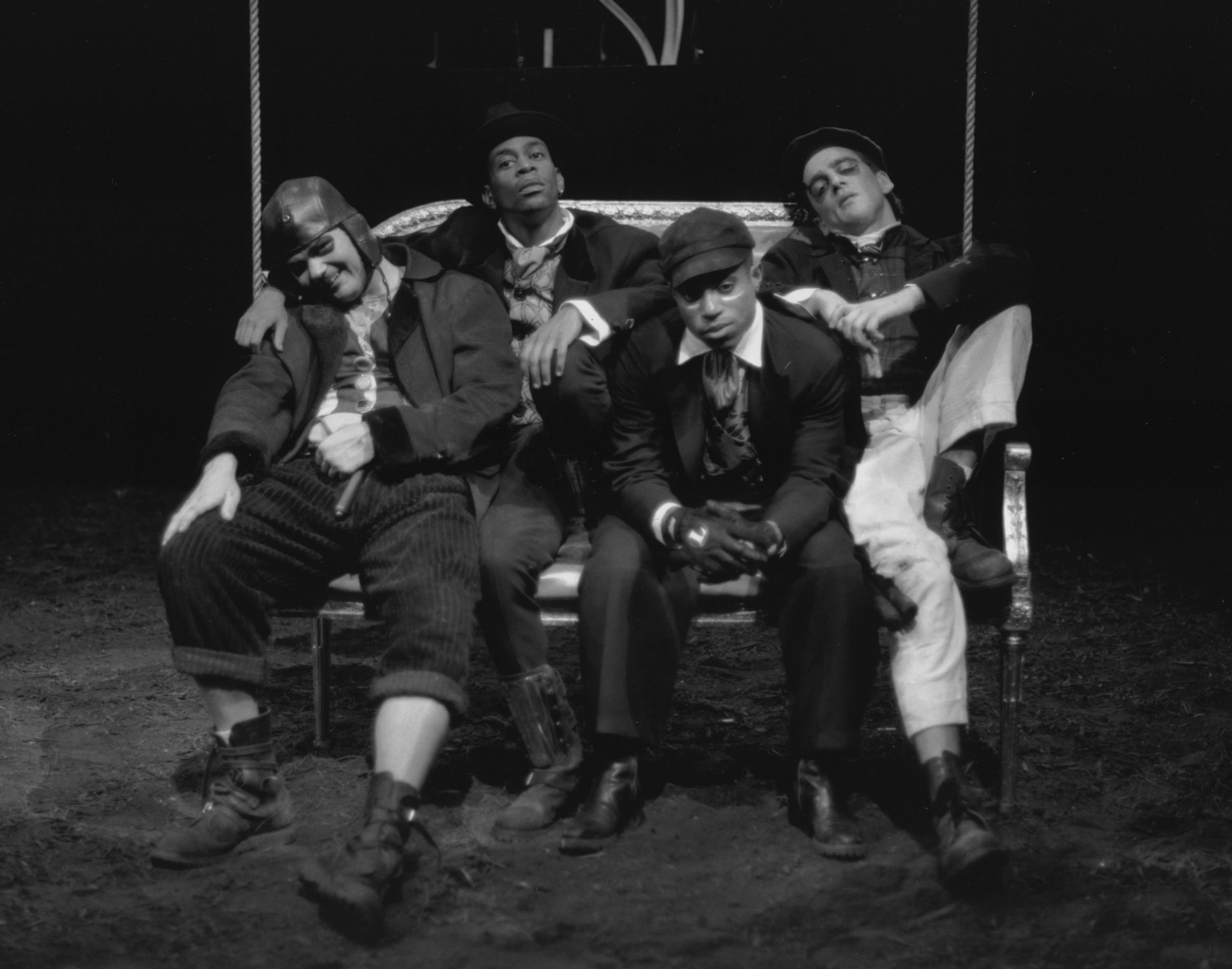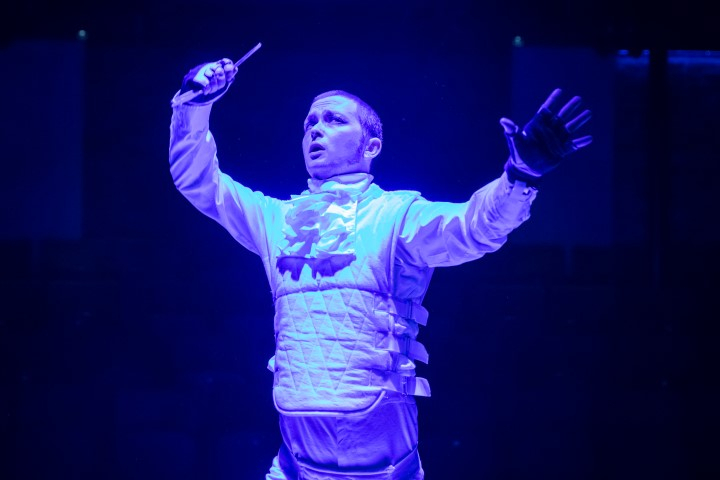A Clockwork Orange
A Clockwork Orange is Anthony Burgess’s most famous novel and its impact on literary, musical and visual culture has been extensive. The novel is concerned with the conflict between the individual and the state, the punishment of young criminals, and the possibility or otherwise of redemption. The linguistic originality of the book, and the moral questions it raises, are as relevant now as they ever were.
- A Clockwork Orange
- A Clockwork Orange on film
- A Clockwork Orange on stage
- The Music of A Clockwork Orange
- A Clockwork Orange and Nadsat
- A Clockwork Orange and the Critics
- The Legacy of A Clockwork Orange
- The Podcast
A Clockwork Orange on stage:

From the first publication of A Clockwork Orange in 1962, Burgess received requests for permission to adapt the novel as a stage play. He explains the situation in a programme note written for the 1990 production at the Barbican Theatre: ‘For 28 years, I was receiving requests from amateur pop groups for permission to present their own versions. These were usually so abysmally bad that I was forced eventually to pre-empt other perversions with an authoritative rendering of my own.’ Hutchinson published A Clockwork Orange: A Play with Music in 1987, and Burgess was anxious to point out that it was not intended to be a ‘grand opera’. As he wrote in the preface to the published text: ‘It is a little play which any age group may perform.’

Despite this apparently modest view of his play, Burgess put a large amount of additional work into his ‘authoritative rendering’, turning the novel into a musical production. The songs are sometimes at variance with the raucous tone of the novel, converting the tone of the piece from dystopia to low comedy and farce. This number is sung by the chorus of droogs in the play’s opening scene:
What’s it going to be then, eh?
What’s it going to be then, eh?
Tolchocking, dratsing and kicks in the yarblockos,
Thumps on the gulliver, fists in the plot.
Gromky great shooms to the bratchified millicent,
Viddy the krovvy pour out of his rot.
Ptitsas and cheenas and starry babushkas
— A crack in the kishkas real horrorshow hot.
Give it them whether they want it or not.
The songs, which are strongly influenced by music-hall traditions and the music of Beethoven, are playful and witty. Burgess allows this atmosphere to colour the play as a whole. At the end of the play, according to the stage directions, ‘a man, bearded like Stanley Kubrick’, comes onto the stage playing ‘Singin’ in the Rain’ on a trumpet. He is kicked off stage by the cast, who then launch into the final number. In practice, most directors have decided to cut the stage business with Kubrick and the trumpet.

A Clockwork Orange: A Play with Music has enjoyed a global reach and enduring success in the years following its publication. It has been performed internationally, by college drama groups and professional theatre companies. The Royal Shakespeare Company’s adaptation of the play (titled A Clockwork Orange 2004), directed by Ron Daniels and with music by Bono and The Edge from U2, premiered at the Barbican Theatre in 1990 and later transferred to the West End of London. In 1994, the Steppenwolf Theater Company staged a production starring K. Todd Freeman and Nick Offerman. The photograph above, from the archive of the Steppenwolf Theatre Company, shows the droogs in costume. More recently, there has been a rock opera version touring Japan, starring Shun Oguri; productions in Stuttgart, Germany and Tulsa, Oklahoma; and successful touring versions in Britain by the Northern Stage Company (directed by Alan Lyddiard), Volcano Theatre (directed by Paul Davies), and Action to the Word (directed by Alexandra Spencer-Jones). Other productions have made use of an all-female cast and an all-black cast.

In 2018, the play was staged by the Liverpool Everyman Theatre, using Burgess’s original songs and music. This production, directed by Nick Bagnall, and starring George Caple as Alex (pictured above), was described as ‘a chilling, ultra-violent cabaret’ by the theatre critic of the Guardian.
Burgess’s original music for the play, which has often been omitted from stage productions, received its European premiere in a concert performance at the Burgess Foundation in Manchester on 28 June 2012.


